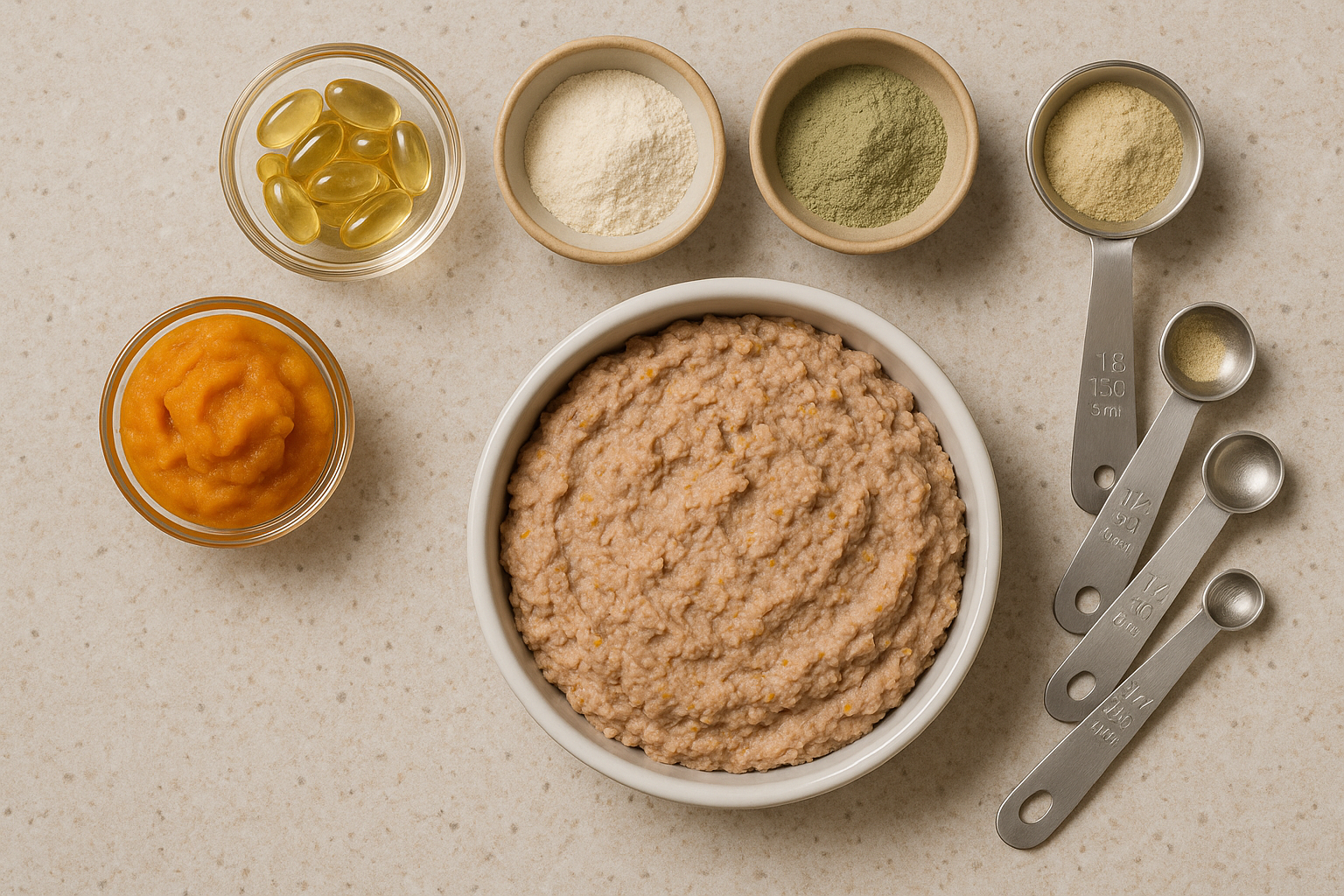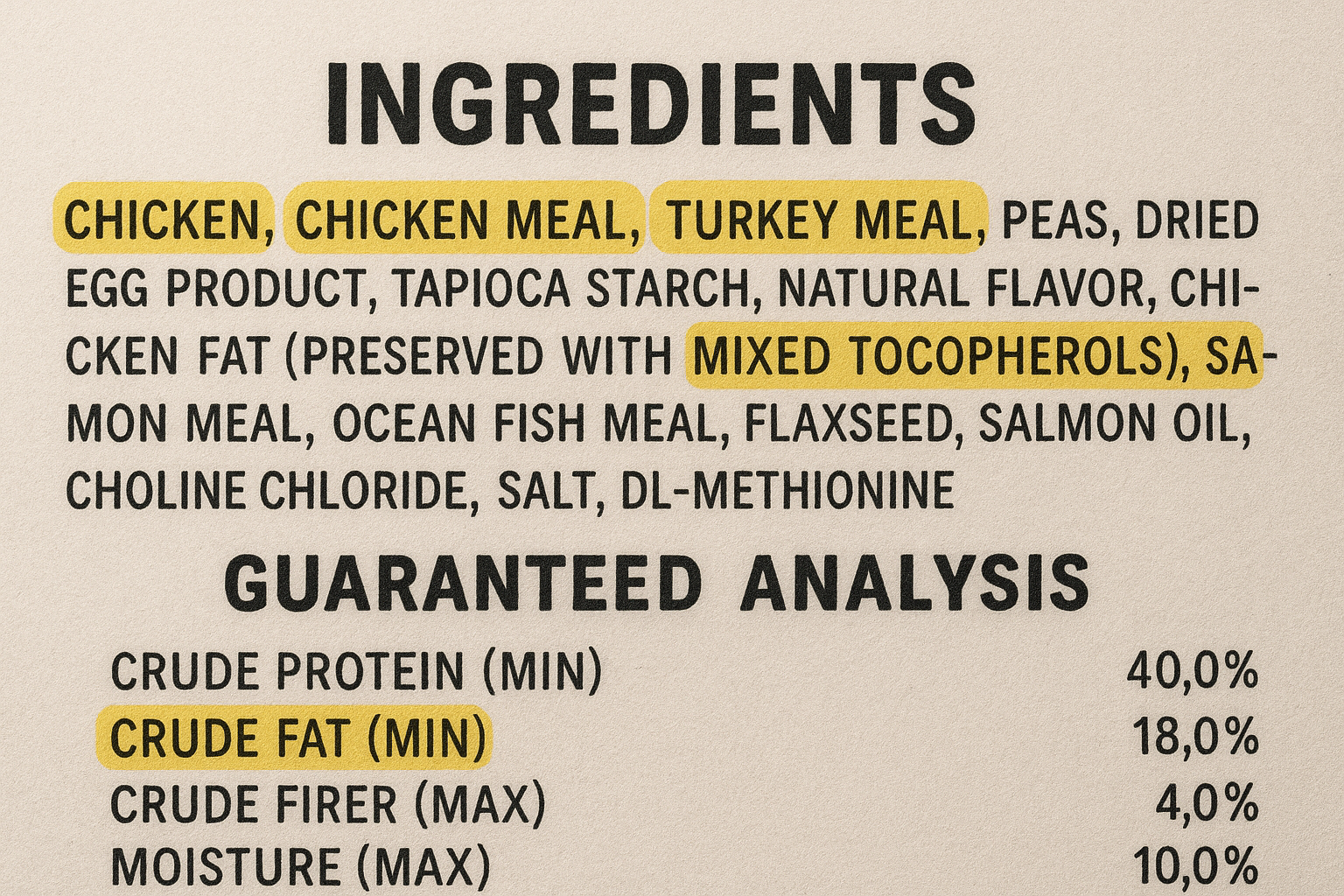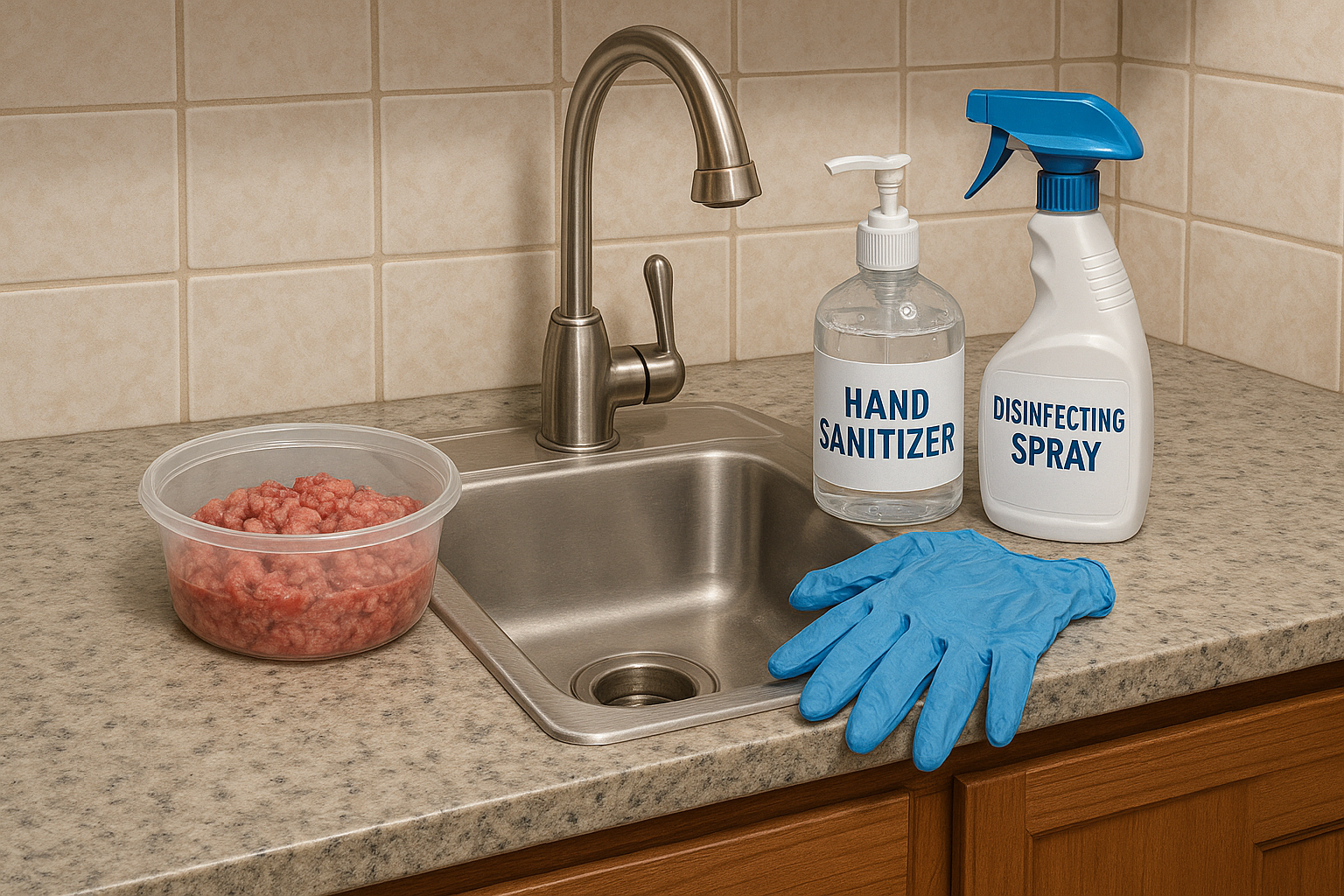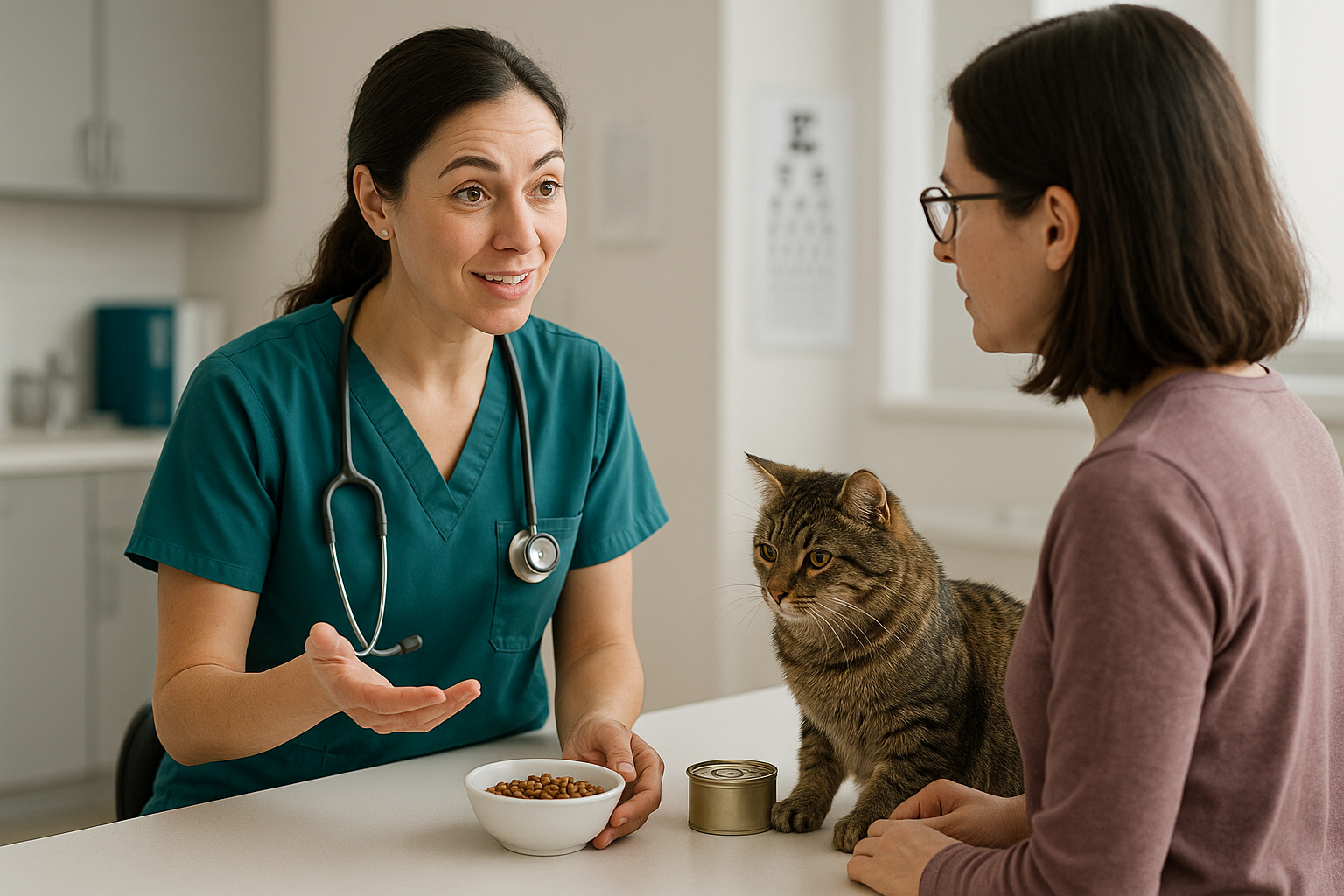Cats need the right cat food to thrive — they are obligate carnivores with distinct nutritional needs.
But what should that cat food actually contain, and how do you pick the right one?
This guide is a complete cat food cheatsheet: everything from reading labels to DIY recipes and transition plans.
Some are wet, with high moisture to support urinary health and hydration.
Some are dry, convenient, and shelf-stable but lower in moisture.
Some are raw or homemade, promising ancestral nutrition — and carrying safety and balance questions.
Some are prescription formulas designed to manage diabetes, kidney disease, or urinary crystals.
Some are blends, mixes, and novel proteins for picky or sensitive cats.
Let's dive right in.
Understanding Cat Nutrition Basics
Cat food must match feline biology. Cats evolved eating small prey: high-protein, high-fat, low-carb, and high-moisture meals. Their metabolism and digestive enzymes reflect that history. When owners feed diets that ignore those basics, problems — from obesity to urinary disease — can follow.
Obligate carnivore: what that means for cat food
Cats are obligate carnivores. That means they need some nutrients that are only (or most reliably) found in animal tissues. For example, taurine — an essential amino acid for cats — is abundant in meat and scarce (or absent) in plant foods. Taurine deficiency can lead to cardiomyopathy and vision problems. In short: cat food should prioritize named animal proteins (chicken, turkey, salmon, etc.).

Key nutrients: protein, amino acids (especially taurine), fat, vitamins, minerals
Protein is the foundation of any good cat food. Quality animal proteins provide essential amino acids including taurine, arginine, and methionine. Fats supply dense energy and essential fatty acids like arachidonic acid (cats cannot synthesize it). Vitamins A and D, B-complex vitamins, and minerals (calcium, phosphorus, potassium) are all required. Cats cannot convert beta-carotene into vitamin A efficiently, so preformed vitamin A from animal sources is necessary.
Authoritative nutrient profiles and minimums are set by organizations like AAFCO, whose profiles are the regulatory backbone for commercial cat food nutrient statements.
The role of water and moisture in cat food
Cats typically have a low thirst drive and historically got most of their water from prey. Wet cat food (canned, pouches) often contains ~70–80% moisture and can substantially improve hydration and urinary tract health. For guidance on the benefits of wet food and hydration, see a clinical overview from the American Animal Hospital Association.
Real-world example: an indoor cat who eats only dry kibble but drinks little water can produce concentrated urine and be at greater risk of crystal formation; switching even part of the calories to wet food can lower that risk.
Types of Cat Food
Understanding the different forms of cat food helps you pick what works for your cat and your schedule. We'll break down dry, wet, raw/frozen, and homemade diets, with pros, cons, and safety notes.
Dry food (kibble): pros and cons
Pros: convenience, shelf stability, cost-per-serving, availability of formulations (e.g., weight-control, hairball). Cons: lower moisture content, often higher carbohydrates for binding and kibble formation, variable ingredient quality. A higher-priced kibble might still include meaningful animal protein, but beware foods where unnamed “meat” or “meat by-products” top the list.
Dental myth: some owners think dry food scrubs teeth; in practice most cats swallow kibble with minimal chewing, and dental health still depends on regular care.
Wet food (canned/pouches): pros and cons
Wet food mimics prey moisture, often has higher protein and lower carbs, and is more aromatic and palatable. It helps hydration (important for urinary and kidney health) and can assist weight control since it's lower in calories per volume. AAHA emphasizes wet food's role in hydration and urinary health: AAHA on wet food.
Drawbacks: higher cost, need to refrigerate opened cans, and shorter serving windows (discard leftovers after a set time).
Raw and frozen diets: benefits, risks, and safe handling
Raw diets attempt to replicate ancestral prey and can be high-protein, high-moisture. Some owners and vets report improvements in coat condition or stool quality. But risks include bacterial contamination (Salmonella, E. coli), parasites, and nutritional imbalance if not formulated scientifically. If choosing raw, use commercial frozen raw from reputable manufacturers or work with a veterinary nutritionist. Always follow strict hygiene: wash hands, sanitize surfaces, and store raw separately. The benefits must be weighed against infection risk to humans (children, elderly, immunocompromised) and cats.
Homemade diets: when to consider them and pitfalls to avoid
Homemade diets give owners control over ingredients and avoid industrial additives. But they must be carefully balanced. Common deficiencies in homemade recipes include taurine, calcium (and phosphorus ratio), vitamin D, and omega-3s. A reliable approach: work with a board-certified veterinary nutritionist and use premixes or supplements that ensure AAFCO-equivalent nutrient completeness. For practical home recipes, veterinarians and holistic formulators provide blueprints (see an example blueprint used by clinicians and advocates in homemade recipes at Holistic Vet Blend), but don’t improvise without professional oversight.

Life Stage and Special Needs Diets
Cats' nutritional needs change through life. Food labeled for the right life stage (kitten, adult, senior) matters — and medical conditions often require prescription diets.
Kittens: growth and energy needs
Kittens need higher calories, an increased protein percentage, and certain minerals and vitamins to support rapid growth. Choose AAFCO-approved growth formulas or diets labeled “for growth and reproduction.” Feed kittens more frequently: small meals every 3–4 hours when very young, transitioning to 3–4 meals daily by adolescence.
Adult maintenance: balanced nutrition and portion control
Adult cats require sufficient high-quality protein to maintain lean muscle, and calories matched to activity level. Use body condition scoring (feel the ribs, observe waist) to adjust portions. Free-feeding dry food is convenient but makes calorie control harder.
Seniors: joint health, kidney support, adjusted calories
Older cats may develop kidney disease, dental issues, or decreased appetite. Senior diets often reduce phosphorus and adjust protein quality (not always quantity) to help kidneys. Omega‑3s and joint-support supplements may support mobility. Always adjust based on veterinary diagnostics (bloodwork, urinalysis).
Weight management and obesity: practical steps
Obesity is a top feline health issue. Weight‑management foods typically reduce calories and increase protein and fiber to preserve muscle and increase satiety. Combine diet with environmental enrichment (play, puzzle feeders) and scheduled feedings. Some foods include fiber blends that extend fullness — useful for indoor cats (see product features for indoor cat formulas noted by reviewers like best indoor cat food guides).
Medical diets: urinary, renal, diabetic, allergies
Prescription diets are formulated to manage conditions: urinary diets adjust minerals and pH; renal diets control phosphorus and protein quality; diabetic diets can be higher-protein, lower-carb; hypoallergenic diets use novel proteins or hydrolyzed proteins to reduce allergic responses. Use these only under veterinary guidance.
How to Choose the Right Cat Food
Choosing cat food requires label literacy, knowledge of life stage, and realistic balancing of budget vs. quality. Here's a deep dive into the practical steps.
Reading the label: ingredients, guaranteed analysis, feeding guidelines
Start with the ingredient list. The first named ingredients tell you the primary protein sources — look for named meats ("chicken", "salmon", "beef") rather than vague terms like "meat by-product." The guaranteed analysis provides crude protein, crude fat, crude fiber, and moisture percentages — valuable for comparing protein density. Feeding guidelines on packaging are ballpark estimates; personalize amounts using your cat’s ideal weight and body condition scores.
Understanding AAFCO statements and what they mean
An AAFCO statement shows the food meets nutrient profiles for a life stage. Two common statements: “Formulated to meet AAFCO nutrient profiles” (based on formulation analysis) and “Animal feeding tests using AAFCO procedures” (meaning feeding trials were performed). Feeding trials are considered a stronger level of evidence because they show the food supported growth or maintenance in actual animals.
Identifying red flags: fillers, artificial additives, marketing traps
Red flags include unnamed "meat" or "meat by-products" at the top of the list, excess grains or corn listed ahead of protein, and unnecessary artificial colors or flavors. Marketing buzzwords ("natural", "premium", "human‑grade") are often unregulated — evaluate the actual ingredient list and AAFCO statement.
Budget vs. quality: balancing cost and nutrition
Calculate cost per day, not just price per bag. A balanced strategy: mix premium wet food for hydration and palatability with a quality kibble for convenience. Prioritize protein quality and moisture content for cats with urinary or renal risks.

Transitioning Your Cat to a New Food
Changing diet abruptly can cause vomiting, diarrhea, or refusal. A slow, patient transition prevents GI upset and behavior issues.
Step-by-step transition schedule
Experts typically recommend a 7–10 day transition. One practical schedule: days 1–3 mix 75% old / 25% new; days 4–6 mix 50/50; days 7–9 mix 25% old / 75% new; day 10: 100% new. If your cat shows digestive upset or refuses the new diet, slow the process — extend each stage by several days. For more guidance from an industry expert, see Purina’s transition recommendations: Purina on changing cat food.
Tips for picky eaters
- Warm the food slightly to increase aroma (test temperature first).
- Add a teaspoon of low-sodium chicken broth or a tiny bit of canned tuna juice (sparingly).
- Try texture changes (pâté vs. chunks) — some cats prefer one over the other.
- Use scheduled meals instead of free-feeding to encourage acceptance at meal times.
Monitoring for adverse reactions
Watch for chronic vomiting, diarrhea, itching, ear infections, or hair loss. If these appear, consult your veterinarian — an elimination diet under supervision can identify allergies.
Homemade and Raw Diets: A Deeper Look
Many owners opt for homemade diets for ingredient control. With care and vet support, homemade can be healthy. But it requires meticulous planning.
Creating balanced homemade recipes with veterinary guidance
A balanced home recipe typically includes:
- 80–90% muscle meat (chicken, turkey, rabbit)
- 5–10% organ meat (liver, heart)
- A calcium source (ground bone or a calcium supplement)
- Essential supplements: taurine, omega‑3 (EPA/DHA), trace minerals and vitamins
Work with a veterinary nutritionist and use a proven premix to avoid dangerous nutrient imbalances. Popular reputable premixes combine organ meat plus balanced minerals and taurine to simplify the process (see Holistic Vet Blend examples for home recipe frameworks: Holistic Vet Blend – homemade recipes).
Common supplements for homemade diets
Supplements often needed include taurine, calcium (if not using bone), omega‑3 fatty acids (EPA/DHA), vitamin E, B-complex, and vitamin D if required. Precision is crucial: both deficiencies and excesses cause harm. If you use premixes that veterinary nutritionists recommend, you reduce risk.
Food safety best practices for raw diets
If you feed raw, follow strict safety: use commercial frozen raw products that are tested, thaw in sealed containers, sanitize surfaces, wash hands, and keep raw food away from other foods. Those at higher infection risk (young children, immunocompromised people) should avoid handling raw pet food.

Feeding Practicalities and Storage
Practical feeding choices determine everyday success. Portion control, storage, and feeding systems (free-feeding vs. scheduled) all influence health.
How much and how often: portion sizes and feeding schedules
Calculate portions from calories per cup/ounce on the bag or can. Use body condition scoring: ribs should be felt with a thin fat cover, an obvious waist seen from above. Kittens need several small meals; adult cats typically do well with two measured meals daily. Senior or diabetic cats may follow specialized schedules.
Free feeding vs scheduled feeding
Free-feeding (leaving dry food out) can cause overeating and obesity. Scheduled feeding improves portion control, appetite monitoring, and allows social bonding at meals. If you free-feed, pre‑measure daily portions and replace stale kibble regularly.
Proper storage to preserve freshness
Store dry food in its sealed bag inside an airtight container, in a cool, dry spot away from direct sunlight. Check expiration and rotating stock. Refrigerate opened canned food and use within 2–3 days.
Common Myths, Signs of Good Nutrition & When to See a Vet
Common myths
- Myth: Cats can thrive on vegetarian diets — false: cats require animal-derived nutrients like taurine and arachidonic acid.
- Myth: Dry food is better for teeth — false: kibble rarely provides adequate abrasive cleaning; dental care is key.
- Myth: All meats are equal — false: named animal proteins and quality meat meals matter; transparency from manufacturers helps.
What to look for: coat, energy, weight, litter box output
Signs of good nutrition include a glossy coat, steady energy, stable weight, regular stools, and normal urination. Sudden changes require attention: lethargy, weight shifts, persistent vomiting, diarrhea, or straining to urinate need veterinary evaluation.
When diet changes don’t help
If a carefully implemented dietary change (over weeks) doesn’t resolve issues like chronic itching, GI upset, or weight problems, consult your veterinarian. Bloodwork, fecal tests, and urinalysis can pinpoint underlying disease.
Practical Sample Feeding Plans and Recipes
Here are practical, actionable feeding schedules and a simple balanced homemade template (use only with veterinary oversight and proven premixes).
Sample feeding schedule for an indoor adult cat
- Morning (7–8 AM): 30–40% of daily calories as wet food (supports hydration)
- Midday (12–1 PM): play session + a small measured portion of dry kibble or interactive feeder for enrichment
- Evening (6–7 PM): remaining calories as wet or mixed food
- Treats: keep to <10% of daily calories; use top-notch, low-calorie treats for training
Simple vet-approved homemade meal template
Blueprint (consult a veterinary nutritionist):
- 80% muscle meat (chicken, turkey, rabbit) — ground or finely chopped
- 5–10% organ meat (liver, heart) — important for vitamins
- Calcium source (ground bone or supplement) to balance phosphorus
- Taurine supplement per vet dosage
- Omega‑3 (fish oil) and a feline vitamin/mineral premix to assure completeness
Remember: improper calcium/phosphorus ratios harm bones and kidneys. Use premixes to avoid errors.
Example homemade recipe (conceptual)
This example mirrors clinical blueprints many vets recommend as starting points (adapted from holistic practitioners and clinical recipe outlines):
- 1 lb ground turkey (85% lean)
- 1–2 tbsp canned pumpkin (fiber)
- 1 egg (optional; cooked)
- Bone meal or formulated calcium supplement (per premix directions)
- Taurine supplement (veterinary dose)
- Icelandic omega‑3 or fish oil (veterinary dose)
- Mix, cool, add premix, then store refrigerated in 3–4 day batches.
For an illustrated, practical homemade recipe process used by clinicians, see the Holistic Vet Blend guide: homemade cat food recipes (note: use with expert oversight).
Buying Guide and Sustainability
How to vet brands and consider sustainability.
How to evaluate brands
Look for transparency: ingredient sourcing, whether formulas are developed with veterinary nutritionists, and recall history. Brands with third‑party testing and clear AAFCO statements are preferable. Check independent reviews, recall databases, and veterinarian recommendations.
Sustainable and ethical considerations
Consider responsibly sourced proteins (e.g., sustainably caught fish, ethically raised poultry), reduced packaging, and recyclability. Sustainability often raises cost, so weigh priorities: nutrition first, then sustainability options like responsibly sourced fish or reduced‑packaging lines.
For product guidance and modern market picks, review curated guides such as a consumer round-up of top indoor formulas: Business Insider indoor cat food guide.
Expert Picks & Video: Some Recommended Foods (and a short expert roundup)
To complement this guide, here’s a quick expert roundup in video form discussing vetted cat food picks for 2025. Watch for review methodology, nutrient priorities, and recommended brands.
Use the video as a starting point; always cross-check with ingredient lists and your cat’s needs.
Practical Tools, Checklists & Troubleshooting
Quick label checklist (snippet for featured excerpt)
For a quick decision at the store: look for named animal proteins first, an AAFCO statement for the life stage, guaranteed analysis with high crude protein, and minimal artificial additives. Keep this checklist on your phone for shopping.
Daily monitoring checklist
- Coat: shiny and clean? Good sign.
- Weight: steady? Use a scale or vet visits to check quarterly.
- Stool: formed and regular? Yes = generally good digestion.
- Urination: normal frequency and volume? Monitor especially if diet is dry-only.
Troubleshooting common issues
- Refusal to eat new food: warm food, blend with old food, or add a strong-smelling topper briefly.
- Vomiting/diarrhea after change: slow the transition; if persistent, contact your veterinarian.
- Itching or hair loss after diet change: consider food allergy and consult vet for an elimination diet protocol.
Extra Resources, Internal Links & Recommended Reads
Explore more in-depth guides and related articles on our site and partner resources. For ongoing reading on pet nutrition, visit our Main Blog Page. If you also own a dog, a comprehensive comparative guide can help: see The Ultimate Guide to Dog Food: Nutrition, Selection, and Top Choices (useful for multi‑pet households). For a quick feed of site content and updates, check the blog sitemap: our blog sitemap.
Optional external read on ethical shopping and non-related interest: if you’re curious about collecting natural crystals while waiting for a vet appointment, see this guide on where to buy real crystals: Where to Buy Real Crystals (a light diversion, but a thorough pick).
Conclusion and Actionable Next Steps
Cat food choices have long-term impacts. Use this checklist to make an immediate plan:
- Identify your cat’s life stage and any medical conditions.
- Pick a food with named animal proteins first and an AAFCO statement appropriate for the life stage.
- Prioritize moisture (wet food) if your cat has urinary or kidney concerns.
- Transition slowly and monitor weight, coat, stool, and energy.
- Consult your vet or a veterinary nutritionist for special diets or homemade plans.

Final notes
Nutrition is prevention. By grounding every food choice in feline biology — high-quality animal protein, appropriate fats, necessary vitamins and minerals, and adequate moisture — you set up your cat for the best possible health. Use the resources and checklists above to choose wisely and consult your veterinarian for specific conditions.







